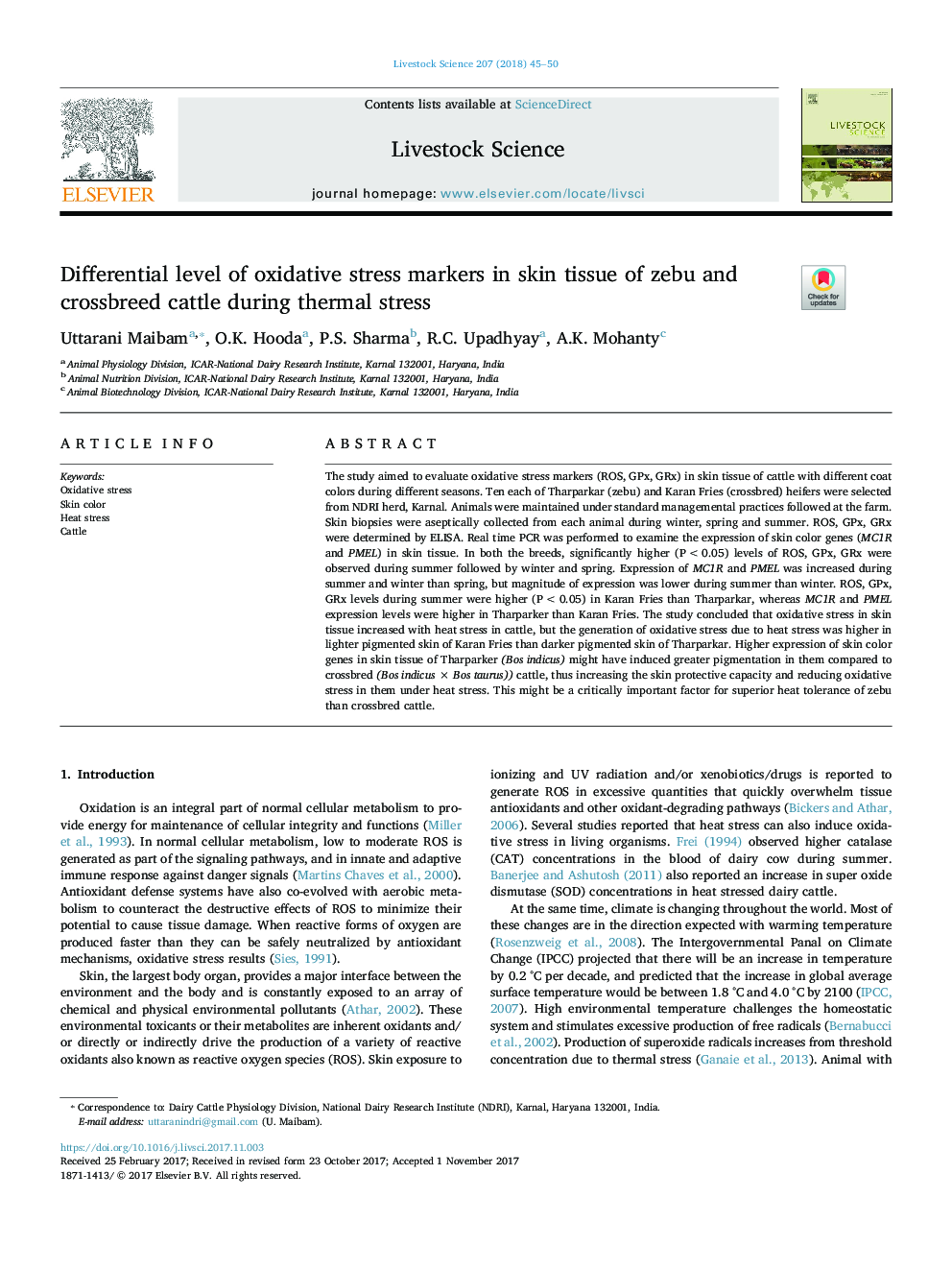| Article ID | Journal | Published Year | Pages | File Type |
|---|---|---|---|---|
| 8502077 | Livestock Science | 2018 | 6 Pages |
Abstract
The study aimed to evaluate oxidative stress markers (ROS, GPx, GRx) in skin tissue of cattle with different coat colors during different seasons. Ten each of Tharparkar (zebu) and Karan Fries (crossbred) heifers were selected from NDRI herd, Karnal. Animals were maintained under standard managemental practices followed at the farm. Skin biopsies were aseptically collected from each animal during winter, spring and summer. ROS, GPx, GRx were determined by ELISA. Real time PCR was performed to examine the expression of skin color genes (MC1R and PMEL) in skin tissue. In both the breeds, significantly higher (P < 0.05) levels of ROS, GPx, GRx were observed during summer followed by winter and spring. Expression of MC1R and PMEL was increased during summer and winter than spring, but magnitude of expression was lower during summer than winter. ROS, GPx, GRx levels during summer were higher (P < 0.05) in Karan Fries than Tharparkar, whereas MC1R and PMEL expression levels were higher in Tharparker than Karan Fries. The study concluded that oxidative stress in skin tissue increased with heat stress in cattle, but the generation of oxidative stress due to heat stress was higher in lighter pigmented skin of Karan Fries than darker pigmented skin of Tharparkar. Higher expression of skin color genes in skin tissue of Tharparker (Bos indicus) might have induced greater pigmentation in them compared to crossbred (Bos indicus à Bos taurus)) cattle, thus increasing the skin protective capacity and reducing oxidative stress in them under heat stress. This might be a critically important factor for superior heat tolerance of zebu than crossbred cattle.
Related Topics
Life Sciences
Agricultural and Biological Sciences
Animal Science and Zoology
Authors
Uttarani Maibam, O.K. Hooda, P.S. Sharma, R.C. Upadhyay, A.K. Mohanty,
